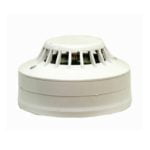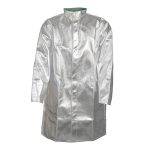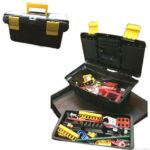Your list is empty, add products to the list to send a request
What’s the Difference Between a Smoke Alarm and a Smoke Detector?

13
Aug
When it comes to fire safety, two terms that are often used interchangeably are “smoke alarm” and “smoke detector.” However, there are subtle differences between these two devices that are crucial to understand for optimal fire protection. In this comprehensive guide, we’ll explore the distinctions between smoke alarms and smoke detectors, their importance in fire safety, and how they work alongside other essential fire safety equipment.
Understanding Smoke Alarms
A smoke alarm is a self-contained unit that combines a smoke sensor, control components, and an alarm-sounding device in one package. These devices are designed to detect the presence of smoke and alert occupants with a loud, audible alarm. Smoke alarms are typically battery-operated or hardwired into a building’s electrical system with a battery backup.
Key features of smoke alarms:
- Stand-alone units
- Contain their own power source
- Emit a loud alarm when smoke is detected
- Often found in residential settings
Understanding Smoke Detectors
On the other hand, a smoke detector is a sensing device that detects the presence of smoke and sends a signal to a connected fire alarm control panel. The control panel then activates the alarm system, which may include audible alarms, visual alerts, and even automatic notifications to emergency services. Smoke detectors are often part of a larger fire detection and alarm system, commonly found in commercial buildings, schools, and other large structures.
Key features of smoke detectors:
- Part of a larger fire detection system
- Connected to a central control panel
- May trigger multiple types of alerts
- Often found in commercial and industrial settings
Types of Smoke Detection Technologies
Both smoke alarms and smoke detectors use similar technologies to detect smoke. The two most common types are:
- Ionization Detectors: These devices use a small amount of radioactive material to ionize the air within a sensing chamber. When smoke particles enter the chamber, they disrupt the ionization process, triggering the alarm.
- Photoelectric Detectors: These use a light source and a photocell sensor. When smoke enters the sensing chamber, it scatters the light beam, causing it to hit the photocell and activate the alarm.
Some advanced models combine both technologies for more comprehensive smoke detection.
The Importance of Smoke Detection in Fire Safety
Smoke detection is a crucial component of any fire safety strategy. Early detection of smoke can provide valuable time for occupants to evacuate and for emergency responders to arrive. This is particularly important because many fire-related fatalities are caused by smoke inhalation rather than burns.
In addition to smoke alarms and detectors, a comprehensive fire safety system may include:
- Fire extinguishers: Various types, including ABC fire extinguishers, CO2 fire extinguishers, and foam type fire extinguishers
- Fire suppression systems: Such as sprinkler heads and clean agent fire extinguishers
- Fire hoses: Including hose reels, hose reel drums, and fire hose pipes
- Emergency lighting: Emergency exit lights and emergency lights for safe evacuation
- Gas leak detectors: For early detection of potentially explosive gas leaks
Integrating Smoke Detection with Other Fire Safety Equipment
A well-designed fire safety system integrates smoke detection with other safety equipment for maximum protection. For example:
- Fire Extinguishers: When a smoke detector triggers an alarm, it alerts occupants to the presence of fire, allowing them to quickly locate and use the appropriate fire extinguisher. Different types of extinguishers, such as ABC fire extinguishers, CO2 fire extinguishers, and kitchen fire extinguishers, are designed for specific types of fires.
- Sprinkler Systems: Advanced smoke detection systems can be integrated with automatic sprinkler systems. When smoke is detected, the system can activate sprinkler heads in the affected area, helping to control the fire’s spread.
- Emergency Lighting: When smoke detectors trigger an alarm, they can also activate emergency exit lights and other emergency lighting to guide occupants to safety, even in low visibility conditions.
- Fire Doors: Some systems can automatically close fire doors when smoke is detected, helping to contain the fire and smoke to a smaller area.
- Ventilation Systems: In some buildings, smoke detection can trigger the shutdown of HVAC systems to prevent smoke from spreading through air ducts.
Advanced Features in Modern Smoke Detection Systems
As technology advances, smoke detection systems are becoming more sophisticated. Some modern features include:
- Wireless Connectivity: Allowing for easier installation and integration with smart home systems
- Multi-Sensor Detectors: Combining smoke detection with heat and carbon monoxide sensing for comprehensive protection
- Self-Testing Capabilities: Regular automated tests to ensure the system is functioning correctly
- Mobile Alerts: Notifications sent directly to smartphones when an alarm is triggered
- Voice Alerts: Instead of just a siren, some systems use voice commands to guide occupants during an emergency
Importance of Proper Installation and Maintenance
Whether you’re using smoke alarms or a more complex smoke detection system, proper installation and regular maintenance are crucial. This includes:
- Placing detectors in optimal locations throughout the building
- Regular testing of all components
- Replacing batteries in battery-operated units
- Cleaning detectors to prevent false alarms
- Replacing outdated units (typically every 10 years)
Additional Fire Safety Equipment
While smoke detection is crucial, a comprehensive fire safety strategy should include a range of equipment. Some essential items include:
- Fire extinguisher hanger hooks for easy access
- Fire balls and elide fire balls for automatic fire suppression
- Fire axes for emergency egress
- Fire brigade inlets for firefighter access
- LPG gas leak detectors for additional safety in areas using gas
- Fire safety gloves and safety shoes (such as Bata hunter shoes, Hillson swag safety shoes, or Liberty police shoes) for personal protection
- Fire hydrant valve parts and fire hose boxes for firefighting infrastructure
The Role of Personal Protective Equipment (PPE) in Fire Safety
While smoke alarms and detectors are essential for early warning, personal protective equipment plays a crucial role in fire safety, especially for those who may need to navigate through smoke-filled areas or fight small fires. Some important PPE items include:
- Safety shoes: Brands like Bata hunter shoes, Hillson safety shoes, and Liberty leather shoes offer protection against falling debris and hot surfaces.
- Fire safety gloves: These protect hands from heat and flames when handling fire extinguishers or other equipment.
- Kevlar jackets: Provide heat and flame resistance for those who may need to move through fire-affected areas.
- Breathing apparatus: Essential for protection against smoke inhalation in severe situations.
Frequently Asked Questions about Smoke Alarms and Detectors
Q: How often should I test my smoke alarms?
A: Firesupplies recommends testing your smoke alarms at least once a month to ensure they’re functioning correctly.
Q: Can I use a smoke detector tester like the Solo A10 smoke detector tester to check my alarms?
A: Yes, Firesupplies offers professional-grade testing equipment like the Solo A10 for thorough smoke alarm testing.
Q: How do I choose between ionization and photoelectric smoke detectors?
A: Firesupplies suggests using a combination of both types for comprehensive protection, as each excels at detecting different types of fires.
Q: Are wireless smoke detectors as reliable as hardwired ones?
A: Modern wireless detectors from Firesupplies are highly reliable and offer the advantage of easier installation and integration with smart home systems.
Q: How often should I replace my smoke alarms?
A: Firesupplies advises replacing smoke alarms every 10 years, even if they appear to be functioning correctly.
Conclusion: Protecting Lives with Comprehensive Fire Safety Solutions
Understanding the difference between smoke alarms and smoke detectors is just the beginning of creating a robust fire safety strategy. From early detection to suppression and evacuation, every component plays a vital role in protecting lives and property.
Firesupplies is committed to providing top-quality fire safety equipment and expert advice to help you create a comprehensive fire safety system tailored to your specific needs. Whether you’re looking for state-of-the-art smoke detection systems, reliable fire extinguishers, or essential personal protective equipment, Firesupplies has you covered.
Don’t wait until it’s too late to prioritize fire safety. Contact Firesupplies today to assess your current fire safety measures and explore how we can help enhance your protection. Our team of experts is ready to guide you through selecting the right equipment, ensuring proper installation, and maintaining your fire safety systems for years to come. Remember, when it comes to fire safety, every second counts – make sure you’re prepared with Firesupplies.



























